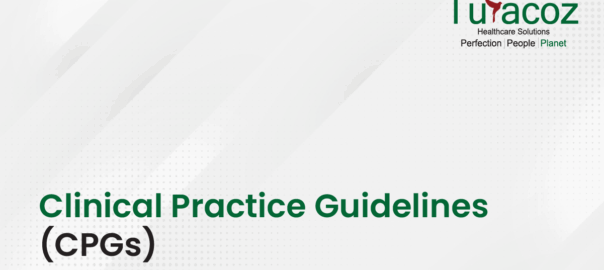Healthcare professionals are expected to provide the best evidence based care to the patients. However, due to continuous medical advancements, it becomes challenging for the clinicians to keep abreast with the new developments and implement them in everyday practice.
Clinical practice guidelines (CPGs) have become increasingly important in the healthcare practice. They are evidence-based recommendations, intended to standardize treatment and provide high quality care to patients. These guidelines are a tool for translating research findings into clinical practice, thus, bridging the gap between what clinicians do and what scientific evidence supports. There is growing evidence that developing and adhering to CPG, can reduce practice variation, and improve outcomes and cost effectiveness of healthcare.
World over, physicians, healthcare organizations, professional societies, disease advocacy groups, government appointed workgroups etc. have been involved in developing CPG to standardize clinical practices.
Greater adherence to CPG is critical to improving healthcare processes and achieving the best patient outcomes. Now, the question arises, why these guidelines need to be followed? They are designed to:
- Improveclinical outcomes
- Provide easy access to quality information, so that clinicians have a wide range of options for patient care, improving efficiency and consistency of care
- Helping clinicians stayapprised of the new developments, by use of up-to-date guidelines
- Improve patient safety and quality of life by facilitating the treatment of patients based on the summary of benefits and limitations of interventions and procedures
- By finding gaps in current knowledge, research activities can be prioritized
Some of the practitioners believe that guidelines are cookbook medicines, not allowing them to make their own independent decisions. The other reasons for non-adherence to these guidelines could be lack of awareness, lack of transparency in guideline development, lack of relevance to clinical practice, complex and conflicting guidelines, and lack of insufficient access to guidelines at point of care.
The development of a good guideline, includes, healthy participation of key stakeholders, access to accurate, credible, up-to-date,relevant scientific information, correct interpretation of the available evidence, clinical flexibility, and use of proper tools for implementation and monitoring in day to day practice. The guidelines must be clearly expressed in a user-friendly, logically organized format,written in anunambiguous, easy to follow language, and with clear links of recommendations to the available evidence.
To ensure improved care outcomes, emphasis should be placed on effective guideline implementation and evaluating their effectiveness in real world clinical settings. The guidelines should be evaluated for practicality and significance, projected benefits and harm,quality and strength of the scientific evidence and should be periodically updated to keep pace with latest advancements in the field of medicine.
Given the large number of guidelines, following are the key questions, one should keep in mind while reviewing any guideline:
- Who developed the guideline?
- Was systematic review of the literature carried out?
- Were the recommendations valid?
- Were all relevant outcomes (overall survival, impact on quality of life, absence of complications etc.) considered?
- Does it report conflict of interest and how was it managed?
- When was the guideline last updated and assessed for validity?
Turacoz Healthcare Solutions, understands the importance of clinical practice guidelines in improving healthcare standards and patient outcomes and recommends strict adherence to them.




